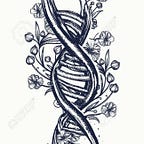A short history of ‘nearly’ everything..
This piece is completely written by Carl Sagan, the beloved science communicator. I have reproduced his words from the last chapter of the book Cosmos. It feels like the summary of a very long time of the Cosmos. There are no better words (that I know of) which communicate the admiration I have for the Cosmos, especially our Earth.
For unknown ages after the explosive outpouring of matter and energy of the Big Bang, the Cosmos was without form. There were no galaxies, no planets, no life. Deep, impenetrable darkness was everywhere, hydrogen atoms in the void. Here and there denser accumulations of gas were imperceptibly growing, globes of matter were condensing — hydrogen raindrops more massive than suns. Within these globes of gas was first kindled the nuclear fire latent in matter. A first generation of stars was born, flooding the Cosmos with light. There were in those times not yet any planets to receive the light, no living creatures to admire the radiance of the heavens.
Deep in the stellar furnaces the alchemy of nuclear fusion created heavy elements, the ashes of hydrogen burning, the atomic building materials of future planets and lifeforms. Massive stars soon exhausted their stores of nuclear fuel. Rocked by colossal explosions, they returned most of their substance back into the thin gas from which they had once condensed. Here in the dark lush clouds between the stars, new raindrops made of many elements were forming, later generations of stars being born. Nearby, smaller raindrops grew, bodies far too little to ignite the nuclear fire, droplets in the interstellar mist on their way to form the planets. Among them was a small world of stone and iron, the early Earth.
Congealing and warming, the Earth released methane, ammonia, water and hydrogen gases that had been trapped within, forming the primitive atmosphere and the first oceans. Starlight from the Sun bathed and warmed the primeval Earth, drove storms, generated lightning and thunder. Volcanoes overflowed with lava. These processes disrupted molecules of the primitive atmosphere; the fragments fell back together again into more and more complex forms, which dissolved in the early oceans. After a time the seas achieved the consistency of a warm, dilute soup. Molecules were organized, and complex chemical reactions were driven, on the surface of clays.
And one day a molecule arose that quite by accident was able to make crude copies of itself out of the other molecules in the broth. As time passed, more elaborate and more accurate self-replicating molecules arose. Those combinations best suited to further replication were favored by the sieve of natural selection. Those that copied better produced more copies. And the primitive oceanic broth gradually grew thin as it was consumed by and transformed into complex condensations of self-replicating organic molecules. Gradually, imperceptibly, life had begun.
Single-celled plants evolved, and life began to generate its own food. Photosynthesis transformed the atmosphere. Sex was invented. Once free-living forms banded together to make a complex cell with specialized functions. Chemical receptors evolved, and the Cosmos could taste and smell. One-celled organisms evolved into multi-cellular colonies, elaborating their various parts into specialized organ systems. Eyes and ears evolved, and now the Cosmos could see and hear. Plants and animals discovered that the land could support life. Organisms buzzed, crawled, scuttled, lumbered, glided, flapped, shimmied, climbed and soared. Colossal beasts thundered through the steaming jungles. Small creatures emerged, born live instead of in hard-shelled containers, with a fluid like the early oceans coursing through their veins. They survived by swiftness and cunning. And then, only a moment ago, some small arboreal animals scampered down from the trees.
They became upright and taught themselves the use of tools, domesticated other animals, plants and fire, and devised language. The ash of stellar alchemy was now emerging into consciousness. At an ever-accelerating pace, it invented writing, cities, art and science, and sent spaceships to the planets and the stars.
These are some of the things that hydrogen atoms do, given fifteen billion years of cosmic evolution.
It has the sound of epic myth, and rightly. But it is simply a description of cosmic evolution as revealed by the science of our time. We are difficult to come by and a danger to ourselves. But any account of cosmic evolution makes it clear that all the creatures of the Earth, the latest manufactures of the galactic hydrogen industry, are beings to be cherished. Elsewhere there may be other equally astonishing transmutations of matter, so wistfully we listen for a humming in the sky.
So take a bow dear reader. You are very much a part of this eternal show, and have the fortune of experiencing it to the full extent. Let’s resolve to admire at least one aspect of Earth every single day and let us fight to protect what we love! Happy Earth day :)
